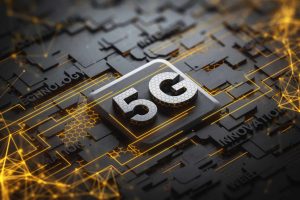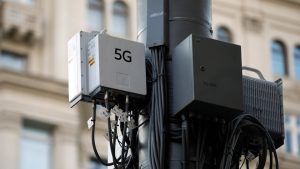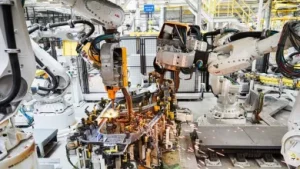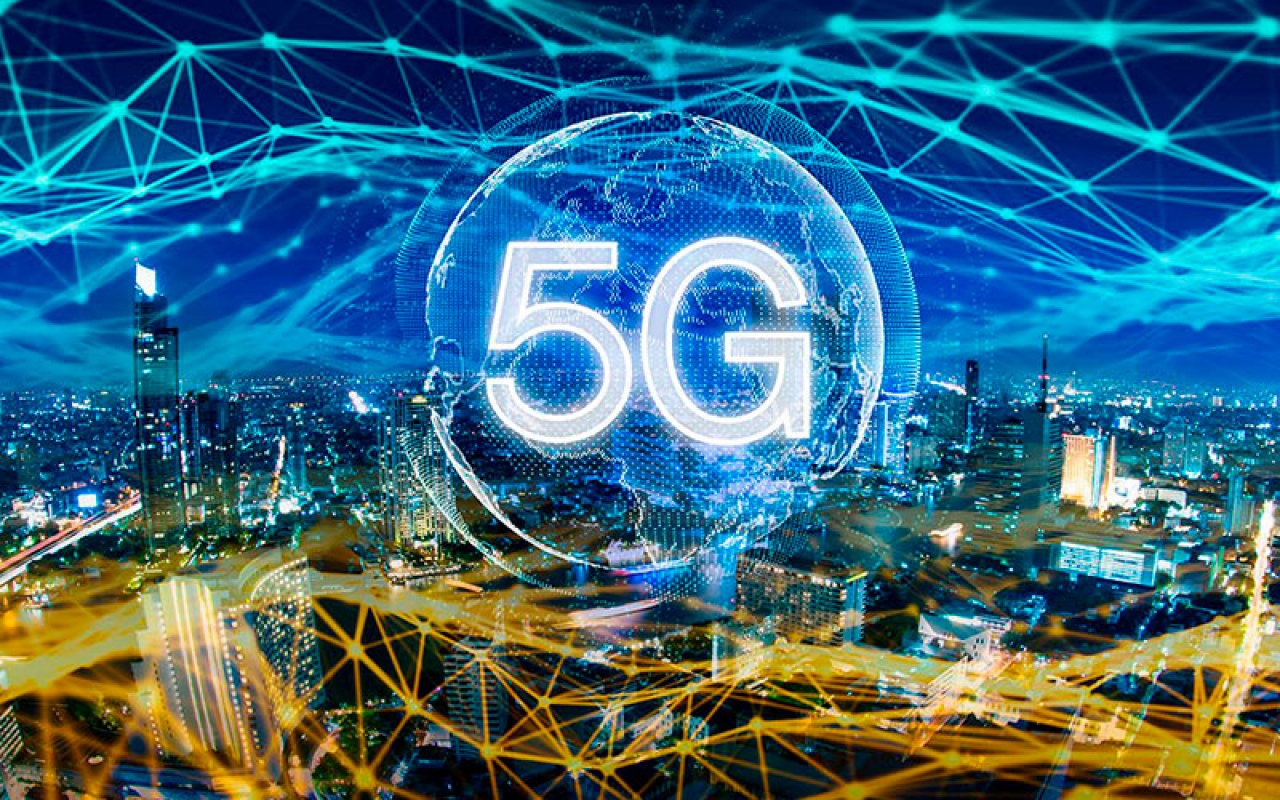What is 5G Technology?
The world of telecommunications is undergoing a revolutionary shift with the arrival of 5G technology. With a theoretical peak speed of 20 Gbps, 5G is poised to outperform its predecessor, 4G, which has a maximum speed of just 1 Gbps. However, 5G technology isn’t just about speed. It promises much lower latency, which significantly enhances the performance of business applications, online gaming, videoconferencing, and even self-driving cars.
While previous generations like 4G LTE were primarily focused on providing robust connectivity, 5G technology is designed to deliver connected experiences from the cloud directly to the user. These networks are software-driven and virtualized, leveraging the power of cloud technologies to ensure faster and more efficient connections. But how exactly does 5G work, and why is it such a game-changer for industries and consumers alike?
How 5G Technology Works

5G technology is more than just an incremental improvement over 4G. Its architecture is based on several advancements in network design, including 5G New Radio (the global standard for enhanced wireless connectivity), and technologies like massive MIMO (multiple input, multiple output). Massive MIMO allows multiple transmitters and receivers to send and receive more data at the same time, significantly increasing the data-handling capacity of the network.
Another critical advancement in 5G architecture is its software-defined platforms. Unlike earlier networks, where much of the functionality was hardware-driven, 5G relies on software to manage network operations. This virtualization allows for greater agility and flexibility in managing network demands, ensuring seamless connections for users.
One of the most significant innovations in 5G networks is the concept of network slicing. Network administrators can create “slices” of the network, each tailored to specific devices or users. For example, a slice for autonomous vehicles might be optimized for low latency and high reliability, while a slice for video streaming would focus on bandwidth and speed.
Benefits of 5G Technology
1. Enhanced Speed and Connectivity
Perhaps the most obvious advantage of 5G technology is the dramatic increase in speed. With speeds up to 20 Gbps, downloading large files, streaming ultra-high-definition videos, and engaging in real-time video conferencing will become smoother and faster than ever.
Example: Imagine downloading a full-length 4K movie in under 10 seconds. With 4G, this would take several minutes. This speed improvement is critical for businesses working with large data sets, such as those in healthcare or media industries, where massive files must be transferred quickly and efficiently.
2. Low Latency for Critical Applications
One of the standout features of 5G technology is its incredibly low latency—down to 1 millisecond. Latency refers to the time it takes for data to travel between two points. In critical applications like self-driving cars, where every millisecond counts, low latency can make the difference between a smooth operation and a potential accident. Similarly, videoconferencing will benefit from reduced lag, ensuring more natural and productive meetings.
Example: In self-driving cars, real-time decision-making is crucial. If a car traveling at high speed detects an obstacle, the decision to brake must be made within milliseconds. 5G’s low latency ensures that these decisions happen in real-time, reducing the chances of accidents.
3. Seamless Connectivity with Wi-Fi 6

Another benefit is 5G’s compatibility with the new Wi-Fi 6 standard (also known as 802.11ax). Wi-Fi 6 shares several traits with 5G, including enhanced performance and lower latency. The integration of Wi-Fi 6 and 5G will enable seamless open roaming between cellular and Wi-Fi networks, meaning users will stay connected as they move between outdoor networks and indoor Wi-Fi without needing to reauthenticate or manually reconnect.
Example: A business professional attending a virtual conference can transition from their home Wi-Fi to a cellular network while walking outside, then back to Wi-Fi in a coffee shop, all without losing connection or dropping the call. This seamless experience ensures productivity and convenience.
4. Improved Coverage in Rural and Urban Areas
One of the more societal benefits of 5G technology is its potential to improve connectivity in underserved rural areas. In regions where 4G networks struggle to meet demand, 5G networks will provide better, faster coverage, ensuring that rural populations have access to the same digital services as their urban counterparts. Additionally, in urban areas where network congestion is often an issue, 5G’s dense, distributed-access architecture will allow it to handle far more users and devices without degradation in service quality.
Example: In rural areas, farmers using 5G-connected IoT sensors can monitor soil conditions in real-time, optimizing water usage and crop yields. In cities, 5G can reduce network congestion during events, such as music festivals or sports games, ensuring attendees stay connected without experiencing slower speeds.
5. Edge Computing and Faster Data Processing
5G technology also brings edge computing to the forefront. By moving data processing closer to the user, 5G networks will reduce the time it takes for data to travel from the user to the server and back, enabling faster responses and more efficient use of bandwidth. This is particularly important for time-sensitive applications like self-driving cars, real-time gaming, and smart city infrastructure.
Example: A smart traffic management system in a city can use 5G and edge computing to analyze traffic conditions in real-time and adjust traffic light patterns accordingly. This can help reduce congestion and improve the overall flow of vehicles during peak hours.
Real-World Applications of 5G Technology
1. Healthcare
In the healthcare sector, 5G technology promises to transform patient care by enabling remote monitoring through connected devices. Patients with chronic conditions can be monitored in real-time via devices that continuously track vital signs like heart rate, blood pressure, and glucose levels. With 5G’s low latency, doctors can receive and act on this data much more quickly than before, potentially saving lives in emergency situations.
Example: A patient with a heart condition can wear a 5G-connected wearable device that continuously monitors their heart rate and rhythm. If an irregularity is detected, the device can instantly notify healthcare professionals, enabling timely intervention.
2. Automotive Industry

In the automotive industry, 5G combined with machine learning (ML) is enabling a revolution in autonomous driving. With 5G technology, cars can communicate not just with each other but also with traffic lights, road signs, and other infrastructure to optimize traffic flow, avoid accidents, and reduce emissions. Vehicles will also be able to gather and share real-time data about road conditions, traffic accidents, and even parking spaces, making driving safer and more efficient.
Example: A network of 5G-enabled autonomous vehicles could communicate with traffic signals and other vehicles to optimize travel routes, reducing fuel consumption and minimizing traffic congestion during rush hour in a smart city.
3. Smart Cities
5G technology will also play a pivotal role in the development of smart cities, where infrastructure, services, and utilities are connected through a vast network of IoT (Internet of Things) devices. Smart traffic lights that can adjust based on real-time traffic data, waste management systems that optimize routes for garbage collection trucks, and energy grids that manage supply and demand efficiently—all of these are powered by the speed and reliability of 5G networks.
Example: In Barcelona, Spain, 5G-enabled sensors are being used to manage parking spaces. These sensors notify drivers of available parking spots in real-time, reducing the amount of time spent searching for parking and cutting down on emissions caused by vehicles circling the block.
Cisco’s Contribution to 5G Technology
Leading the charge in 5G development is Cisco, whose cloud-first, software-driven architecture is a critical component of 5G networks. Cisco’s ONE architecture supports seamless integration between enterprise networks and service provider deployments, making it easier for companies to adopt 5G technology across their operations.
Cisco also plays a key role in open roaming, ensuring that users can move between cellular and Wi-Fi networks without interruption. By offering automated, cloud-to-client solutions, Cisco is making it possible for businesses to leverage the full potential of 5G technology, from enhanced connectivity to edge computing and automation.
Challenges and Future Expansion of 5G Technology
While 5G technology is already available in several countries, these are typically 5G non-standalone (5G NSA) services, which build on existing 4G LTE infrastructure. Although 5G NSA offers faster speeds and better performance than 4G, the full capabilities of 5G standalone (5G SA) networks, which are designed to deliver ultra-low latency and higher capacity, are expected to become widely available by 2022.
However, the global rollout of 5G technology is not without its challenges. The high cost of infrastructure development, regulatory hurdles, and concerns about cybersecurity must all be addressed to ensure the widespread adoption of 5G.
Conclusion
5G technology represents a significant leap forward in connectivity, speed, and reliability. From enhancing everyday applications like videoconferencing and online gaming to enabling cutting-edge innovations like self-driving cars and smart cities, 5G promises to revolutionize industries and improve our day-to-day lives.
Whether it’s remote healthcare, autonomous driving, or simply seamless connectivity, the potential of 5G technology is boundless. As more industries embrace this technology, the world will see transformative changes in how we communicate, work, and live.




